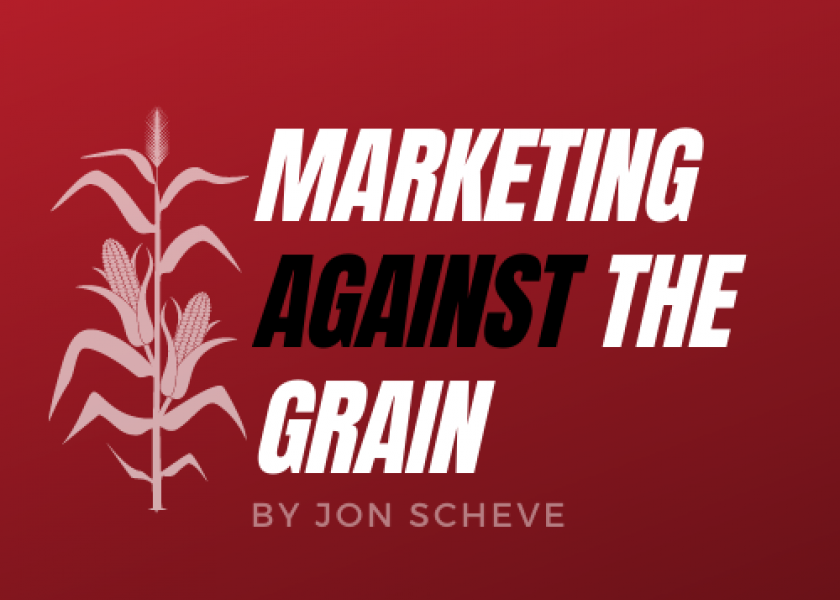Can Corn Rally Back? Plus How to Add 30 Cents to Some Corn Sales

This week’s forecast indicates colder weather. The market will be monitoring the weather, including just how quickly the Dakotas can warm up and dry out for price direction.
The market is also watching what Russia will do with the Black Sea corridor and Ukraine grain shipments after mid-May. Early last week eastern European farmers became concerned with how much grain was moving west out of Ukraine because it was causing big price declines for locally grown grain. The European Union stepped in and found a way to move the grain west without hurting farmers in countries close to Ukraine. The continued uncertainty of how and where Ukraine’s grain will be exported will likely impact U.S. grain prices this summer and the next marketing year.
Old crop corn basis is improving across the U.S. Plus, the May to July corn futures inverse spread suggests end users still need grain for the summer. Upside potential still seems to exist in either the futures market and/or basis values moving forward.
The recent December corn and November soybean price drop puts values at levels where farmers are not incentivized to plant in unfavorable conditions. If the northern Corn Belt remains wet and cool through late May, more acres might end up in prevent plant.
Market Action
On February 9, when May corn was trading at $6.75, I thought it was likely corn prices would trade sideways to slightly higher through late April. Therefore, I placed a trade to maximize some profit potential if that happened. On 10% of my 2022 production, I sold a $6.90 May straddle (i.e., sold both the $6.90 May put and the $6.90 May call, which are based upon May futures), which allowed me to collect a net positive value of 48 cents.
What Does This Mean?
If the value of May corn on April 21 is:
- Above $7.38 – I will sell futures at $6.90, but I keep all of the 48 cents collected on the trade, so it would be like selling $7.38 futures.
- Below $6.42 – I give back all of the 48 cents originally collected, and I start to lose on this trade penny for penny below this value.
- Between $6.42 and $7.38 – I keep some of the 48-cent profit I collected when I placed the trade. The closer the price is to $6.90, the more I keep from the trade.
Why Did You Make This Trade?
In early February I was comfortable with all potential outcomes.
- Prices go up – I would be happy selling 10% of my crop at $7.38.
- Prices go down – Based on the previous several months, it seemed unlikely corn would trade to the lower end of this range. Plus, it was only 10% of my production, and I had already collected profit on this type of trade over the last several months. Therefore, the downside risk seemed limited.
- Prices stay sideways – I would collect additional profits to add to later sales, which seemed the most likely scenario.
What Happened?
On April 18, a few days before the options expired and May corn was trading at $6.82, I bought back the $6.90 puts and calls for a total of 15 cents. With several days of trading left, I did not want to take any chance the calls would be exercised. After commissions, I collected just over 31 cents of profit on this trade that I can apply to my final prices (i.e., the 48 cents originally collected, less the 15 cents to buy back the options, and less almost 2 cent commission to get in and out of the trades)
Bottomline:
This is the sixth straddle trade where I collected a profit in the last six months. I am happy with the results, because had I waited longer my profit would have been lower. Plus, one month prior to the saddle’s expiration the trade was losing more than 30 cents. Ultimately, the market rallied, and I walked away with a nice profit.
With this trade, I have made $1.90 per bushel profit on 10% of my production (or the equivalent of nearly 19 cents on 100% of my production), while the market has remained mostly sideways the past 6 months.
These trade examples illustrate how selling straddles in sideways markets can be a great way to increase profits. However, the recent drop in futures a month ago showed why they must be done carefully. Farmers need to fully understand and be willing to accept all potential final outcomes if prices go up, down or sideways before placing these types of trades. They are not perfect and certainly do not work every time, but this year they have been a great addition to my trading toolbox.
Missed a recent article by Jon Scheve? Get it sent to you directly every week. Send a request by email: jon@superiorfeed.com
Want to read more by Jon Scheve? Check out recent articles:
Spreads And Basis Suggest Old Crop Corn Futures Values May Be Too Low
The Market Will Be Focusing On Planting Pace In The Dakotas
If Corn Acres Are Reduced It Does Not Automatically Lead To More Bean Acres
How Important Is Each USDA Report?
Did Old Crop Corn Finally Hit A Floor Price?
Have Corn Prices Dropped Too Fast Too Early?
How Will The Market React When Farmers Start Focusing On 2023 Planting?
Jon Scheve
Superior Feed Ingredients, LLC







